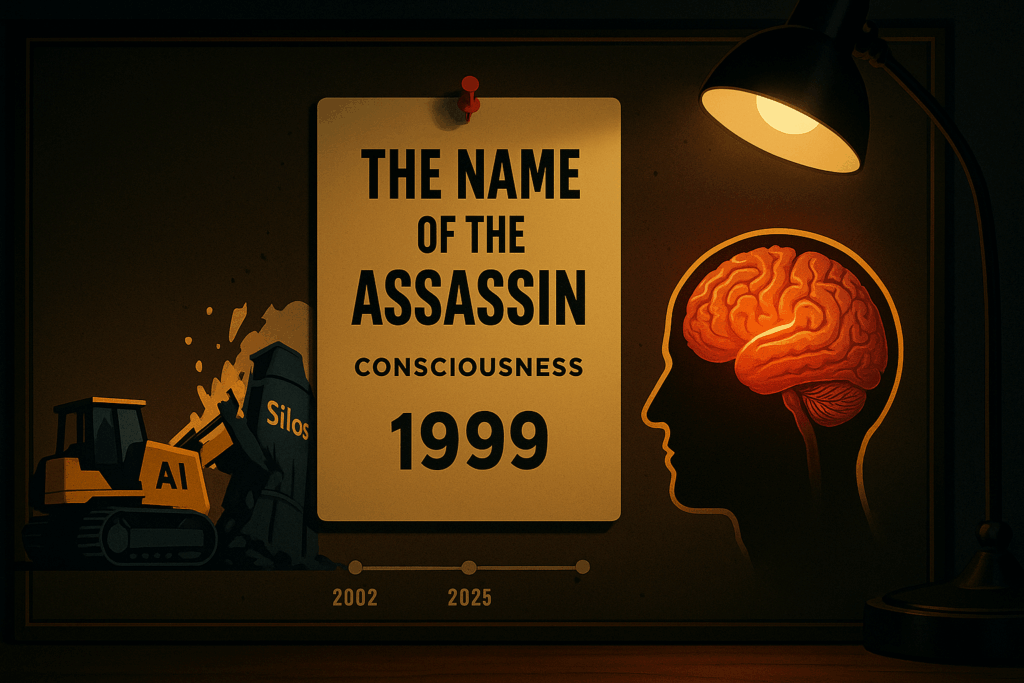Illustration by ChatGPT
Yes, it’s one of those detective stories where they reveal the murderer’s name right away, but that doesn’t make it any less exciting—in fact, it makes it even more exciting—because you’ve been given the answer when you still don’t know any of the questions. It’s the same thing in the series that starts here: I described the mechanism of consciousness in 1999, but the neuroscientific questions that proved that this was indeed the answer only came to light in the years that followed. This will be explained here. We also needed the emergence of AI bulldozers of silo thinking so that we could connect the dots between the questions that came later and the answer given earlier. I will explain all this at a speedy pace to avoid what I have observed in my previous series when I spent a lot of time saying: ‘A little patience, please: I anticipated your objection: it will be answered in episode 3… or in episode 5… or episode 8, etc.’
The name of the assassin
I explain the mechanism of consciousness in “Le secret de la chambre chinoise”, an article published in the journal L’Homme in 1999 (150 : 177-202), which was later translated into English. Furthermore, as soon as 2002, when Douglas R. White – the anthropologist who had invited me to the University of California, Irvine in 1997 – created my English Wikipedia page, he took care to signal my discovery of consciousness’ mechanism:
Memory and consciousness
In an article published in 1999, Jorion offered a new theory of consciousness which goes beyond the Freudian notion that some of our decisions have unconscious motives by suggesting that in fact all our decision-making has unconscious roots, revealing freewill to be an illusion. Consciousness is shown to be a consequence of a mechanism allowing us to perceive as simultaneous the sensations produced separately by our five senses, a necessary preliminary to creating memory traces, that is, also, the prerequisite to any learning process. Drawing the consequences of an observation made by Benjamin Libet, that intention is an artefact as it springs to consciousness half a second later than the action it is supposed to have generated, Jorion further suggested that consciousness errs when it assumes to be the cause of human actions while it is nothing more than an ancillary consequence of the registration process that allows memory to accrue.
It has been mentioned there ever since. So what happened during those twenty-three years? Or rather, ‘What didn’t happen?’
(to be continued in the next episode…)
